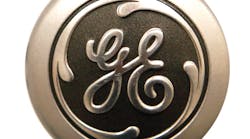General Electric Co. will exit the health-care and oil markets as Chief Executive Officer John Flannery takes the most dramatic steps yet to pull the fallen corporate titan from a deepening crisis. The shares surged in early trading.
The future company will narrow its focus to power, renewable energy and jet engines, GE said in a statement Tuesday. It will spin off its medical-equipment business and sell its majority stake in oilfield supplier Baker Hughes.
The changes will fundamentally reshape an icon of American business, which is mired in one of the worst slumps in its 126-year history amid flagging demand for industrial equipment, weak cash generation and an accounting investigation by U.S. regulators. When Flannery’s done, GE will bear little resemblance to the conglomerate that used to count NBC, home-appliances, plastics and a sprawling finance unit among its holdings.
“GE will be a focused high-tech industrial company that will be easier for investors to follow and measure with a significantly improved balance sheet to support its remaining businesses,” the manufacturer said in the statement. GE plans to reduce net debt by about $25 billion by 2020, the Boston-based company said.
Investors gave an early thumbs-up, as the shares jumped 5.9% to $13.50 in pre-market trading. GE fell 27% this year through Monday, following a 45% decline last year -- a slump that led overseers of the Dow Jones Industrial Average to kick GE out of the blue-chip index it had been in for more than 100 years.
Trian Fund Management, which holds a stake in GE and has a seat on the board, said it welcomed the moves. “Trian supports the strategic initiatives announced today by GE and believes that these initiatives will create substantial value for shareholders,” the fund led by investor Nelson Peltz said in an emailed statement.
Dividend Plan
GE said it would maintain its dividend through the health spinoff. After that, the company “expects to adjust the GE dividend with a target dividend policy in line with industrial peers.”
Investors have been bracing for a possible cut as GE’s condition has deteriorated. Flannery already reduced the payout in November, a painful blow to the many investors who have come to rely on the steady income.
The CEO’s latest moves mark his second attempt to chart a turnaround, capping a strategic review he has been pursuing since taking the helm last year from Jeffrey Immelt. In November, Flannery unveiled changes including asset sales and a board overhaul, while saying the GE of the future would revolve around the energy, aviation and health-care markets.
That generated criticism from investors who called the steps insufficient, and the shares continued to fall. Early this year, after GE detailed worse-than-expected problems with insurance liabilities, Flannery promised to explore bigger changes, including a possible breakup.
Following Siemens
Since then, Flannery has agreed to unload GE’s century-old locomotive operations. On Monday, he announced the sale of an industrial-engine business to buyout firm Advent International. Immelt sold most of GE’s banking and consumer operations.
Under the plan unveiled Tuesday, GE will sell 20% of the health business and spin off the rest to its shareholders tax-free. The health business makes imaging machines and other hospital equipment.
The exit from health care mirrors a similar move by Siemens AG, the German industrial giant that’s dramatically simplified its conglomerate structure in recent years. The Munich-based manufacturer, which competes with GE in areas such as power-generation and medical scanners, sold shares in its Healthineers subsidiary in March, marking the country’s second-biggest initial public offering in almost two decades.
The U.S. and European manufacturing titans have historically tracked each other’s business closely, with close competition in power turbines, household appliances, medical devices and light bulbs. Siemens today is a far leaner business than it was a decade ago, having cut ties with some historic assets such as its communications business and the Osram light-bulb business.
Shrinking Finance
GE plans to “materially shrink” the balance sheet of its finance arm, GE Capital, aiming to sell $25 billion in energy and industrial finance assets by 2020. The company also is exploring options to reduce its insurance exposure. GE shocked investors this year with a $15 billion shortfall in insurance reserves.
The sale of the Baker Hughes stake -- to occur over the next two to three years -- will end GE’s brief, rocky tenure in the oil and gas market.
GE began an aggressive expansion of its crude operations in 2007 with the $1.9 billion acquisition of equipment-maker Vetco Gray, building on a small set of assets. Over the next seven years, GE shelled out more than $10 billion on additional deals, buying companies such as Wellstream and Dresser.
Oil Drag
Just as GE Oil & Gas was becoming one of the company’s most prominent businesses, the market collapsed. The price of crude plummeted more than 60 percent over 2014 and 2015. With demand down sharply, the division has weighed on GE’s financial results.
What’s more, GE’s oilfield offerings were still limited compared to its rivals, constraining growth in the event of a recovery. Under Immelt, GE agreed in 2016 to join forces with Baker Hughes, creating a more-formidable player with a robust product lineup that would be better able to compete with industry leader Schlumberger Ltd.
That didn’t last long. Flannery said shortly after taking over last year that GE would explore options to get out of its 62.5% stake, without committing to a formal exit plan.
By Richard Clough and Phil Serafino



